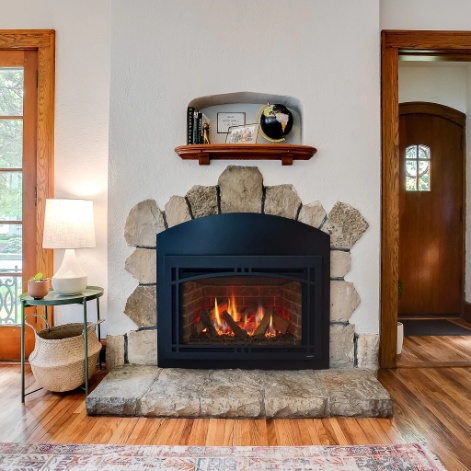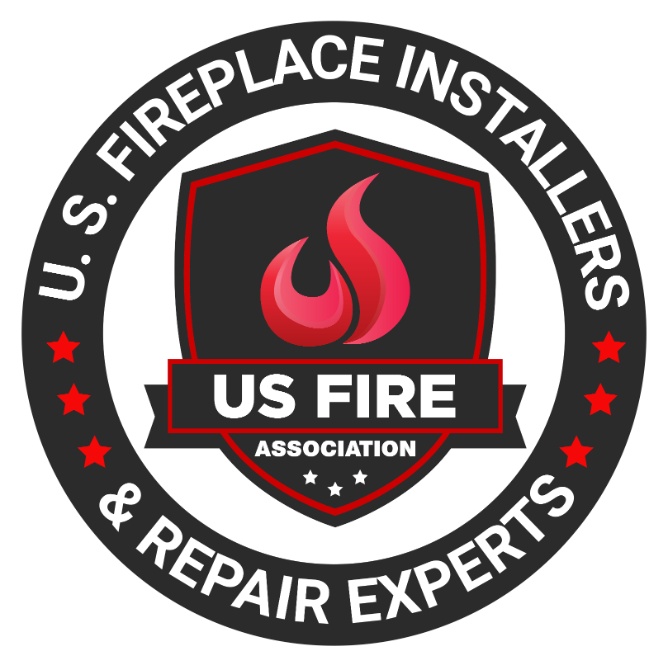Table of Contents
- 1 What Are Electric Fireplaces?
- 2 How Do Electric Fireplaces Work?
- 3 What Are the Benefits of Using an Electric Fireplace?
- 4 Do Electric Fireplaces Really Work as a Heat Source?
- 5 Are There Any Drawbacks to Using an Electric Fireplace?
- 6 How to Choose the Right Electric Fireplace for Your Home?
- 7 Frequently Asked Questions
Curious about electric fireplaces and how they compare to traditional ones?
We will explore what electric fireplaces are, how they work, and the benefits they offer.
We’ll also discuss if they truly work as a heat source, if they can help save on heating costs, and if they’re suitable for all types of homes.
Additionally, we’ll look into any potential drawbacks and provide tips on choosing the right electric fireplace for your space.
Let’s get started!
What Are Electric Fireplaces?
Electric fireplaces are innovative heating appliances designed to replicate the ambiance and aesthetics of a traditional fireplace.
They do this without the hassle of maintenance and operation involving real fire.
These versatile heating units come in a variety of modern design options.
They range from sleek wall-mounted models to fashionable fireplace TV stands.
This variety offers homeowners a range of styles to complement their decor.
With advancements in heating technology, electric fireplaces now provide efficient warmth.
They feature energy-saving options like adjustable thermostats and remote controls.
Beyond their practicality, these fireplaces serve as focal points in living spaces.
They create a cozy atmosphere and add a touch of elegance to any room.
How Do Electric Fireplaces Work?
Electric fireplaces work by utilizing heating elements that generate heat.
This heat is then dispersed into the room through a fan-forced heating system.
This system provides warmth and creates a comfortable environment.
The heating elements within the electric fireplace are typically made of durable materials like metal coils or ceramic.
They heat up when electricity flows through them, creating a source of warmth.
The fan-forced heating system efficiently circulates this heat throughout the room.
This ensures an even distribution of warmth.
This mechanism allows electric fireplaces to quickly and effectively heat up a space.
They are a popular choice for adding both ambiance and practical heating functionality to any room in a home.
What Are the Benefits of Using an Electric Fireplace?
The benefits of using electric fireplaces include energy-saving features, eco-friendly operation, and the ability to enhance the ambiance of a space.
They do this with realistic flames and convenient heating options.
Electric fireplaces are a great option for those looking to reduce their energy consumption.
They still allow you to enjoy the cozy warmth and aesthetic appeal of a traditional fireplace.
With advanced technology, these fireplaces provide efficient heat distribution.
This helps you save on energy costs.
Their eco-friendly design means they produce zero emissions.
This makes them a sustainable choice for environmentally-conscious consumers.
The realistic flame effects offered by electric fireplaces create a soothing atmosphere.
They are perfect for relaxing evenings or adding a touch of charm to any room.
Easy to Install and Use
Electric fireplaces are known for their easy installation process.
This makes them a convenient and hassle-free heating solution for homeowners.
They come with user-friendly setup options.
Individuals can simply plug them into a standard electrical outlet.
This eliminates the need for complex installation procedures.
With just a few easy steps, anyone can enjoy the cozy ambiance and warmth of an electric fireplace in their home.
This simplicity in setting up electric fireplaces has made them a popular choice.
They enhance the comfort and aesthetic appeal of living spaces effortlessly.
Energy Efficient
Electric fireplaces are highly energy efficient.
They consume less energy compared to traditional heating sources.
This leads to cost savings and reduced environmental impact.
These fireplaces are designed with advanced technology.
This allows them to produce and distribute heat more efficiently.
Most of the energy used is converted into warmth for the room.
This improved efficiency helps keep electricity bills lower.
It also promotes environmental sustainability by reducing overall energy consumption.
The adjustable settings on electric fireplaces enable users to customize the heat output.
This further enhances their energy-saving capabilities.
Safe and Clean
Electric fireplaces offer a safe and clean heating option.
They do not produce real flames, eliminating the risks associated with traditional fireplaces.
They require minimal maintenance for optimal performance.
These fireplaces are designed with advanced safety features.
These include cool-touch exteriors, overheating protection, and automatic shut-off mechanisms.
These features help prevent accidents.
Since they don’t emit any harmful fumes or particles, electric fireplaces are a popular choice.
They are ideal for households with children or pets.
Their hassle-free operation and lack of ash or soot make them a convenient heating solution.
This is perfect for busy homeowners looking for a low-maintenance option.
They still provide cozy warmth during the colder months.
Do Electric Fireplaces Really Work as a Heat Source?
Electric fireplaces are effective heat sources.
They can provide sufficient warmth for a room.
The heating capacities vary depending on the model and size of the fireplace.
These fireplaces are a popular choice for homeowners.
They add both ambiance and heat to their living spaces.
With heat outputs typically ranging from 4,000 to 9,000 BTUs per hour, electric fireplaces offer a convenient way to warm up smaller to medium-sized rooms.
Their heating capacity makes them suitable for areas up to around 400 square feet.
This makes them ideal for bedrooms, dens, and offices.
Many electric fireplaces come with adjustable settings.
This allows users to customize the level of warmth according to their preferences.
Do They Provide Enough Heat for a Room?
Electric fireplaces can effectively heat rooms of different sizes.
They offer temperature control options that allow users to adjust the heat output based on their comfort preferences.
These versatile heating units come in a range of sizes and power capacities.
This makes them suitable for cozy living rooms, spacious bedrooms, or even compact offices.
With features like adjustable thermostat settings and remote controls, individuals can easily set their desired temperature.
This flexibility ensures a comfortable environment.
It also helps in saving energy by only heating the space as needed.
Whether it’s a chilly winter evening or a cool summer night, electric fireplaces provide a convenient and efficient way to keep any room cozy and inviting.
Do They Help Save on Heating Costs?
Electric fireplaces are cost-effective heating solutions.
They can help users save on heating costs.
This is especially true when utilizing energy-saving modes and efficient heat distribution methods.
These fireplaces are designed to provide an efficient and economical alternative to traditional heating methods.
They feature programmable thermostats and timers.
These allow for precise control over energy consumption.
By using LED technology and zone heating capabilities, electric fireplaces ensure that only the necessary areas are heated.
This reduces overall energy usage.
This targeted approach saves money on electricity bills.
It also results in a lower carbon footprint.
This makes them a sustainable choice for environmentally-conscious individuals.
They are looking to lower their energy bills.
Are They Suitable for All Types of Homes?
Electric fireplaces come in a variety of designs and styles.
This makes them suitable heating solutions for different types of homes.
They work regardless of size or decor preferences.
These versatile heating units can effortlessly blend in with modern, traditional, minimalist, or eclectic interiors.
They add a touch of warmth and elegance to any living space.
From sleek wall-mounted fireplaces that suit contemporary apartments to freestanding models that evoke a cozy cabin feel, electric fireplaces offer a wide range of options.
This caters to diverse design aesthetics.
Whether you prefer a sleek glass finish for a modern look or a rustic stone facade for a more traditional ambiance, there is an electric fireplace design to complement every style.
Are There Any Drawbacks to Using an Electric Fireplace?
While electric fireplaces offer numerous benefits, there are some drawbacks to consider.
These include potential fire hazards, indoor air quality concerns, and limitations in replicating the authentic feel of a traditional fireplace.
One significant drawback of electric fireplaces is the risk of overheating.
This can lead to potential fire hazards if not used according to manufacturer instructions.
These fireplaces may impact indoor air quality.
They can emit particles or odors during operation, especially if they are not properly maintained.
Another challenge is that while electric fireplaces can provide warmth, they often lack the crackling sounds and mesmerizing glow.
These elements make a real fireplace experience so cozy and inviting.
Limited Heat Output
One drawback of electric fireplaces is their limited heat output.
This may not be sufficient for larger areas or open floor plans.
It may require additional heat sources to ensure adequate warmth.
While electric fireplaces are effective in providing cozy ambiance, they often struggle to heat spaces exceeding a certain square footage.
This is due to their size and power output.
Their heat settings can be limited compared to traditional fireplaces or other heating appliances.
To optimize heating solutions in spaces that demand higher heat output, users can consider supplementing their electric fireplace.
They can use portable heaters or utilize a combination of heating methods.
This approach helps distribute warmth more evenly and efficiently throughout the room.
It addresses the limitations of electric fireplaces in terms of heating coverage.
May Not Replicate the Look and Feel of a Real Fireplace
Another drawback of electric fireplaces is their inability to fully replicate the authentic look and feel of a traditional fireplace.
The flame effects may lack the realism and visual appeal of a genuine fire.
One of the key challenges faced by manufacturers of electric fireplaces is creating flame effects.
These effects must mimic the natural movement and glow of real flames.
While traditional fireplaces boast crackling sounds, smoke, and random flickering flames, electric fireplaces often struggle to achieve the same level of authenticity.
To enhance the realism of electric flames, manufacturers are continually investing in innovative technologies.
These include 3D holographic imaging, LED lighting, and advanced projection techniques.
These advancements aim to bring a more lifelike and captivating visual experience to electric fireplace users.
Requires Electricity to Operate
An inherent drawback of electric fireplaces is their reliance on electricity to operate.
This may pose limitations in situations where power outages occur.
It can also be an issue in off-grid settings that lack consistent electrical supply.
The energy consumption of electric fireplaces can vary depending on the model and settings chosen.
Some modern units are designed with energy-saving features.
These include LED technology and adjustable heat settings.
These features help to make them more energy-efficient.
The plug-and-play nature of electric fireplaces makes them convenient to set up in various household settings.
Whether it’s a cozy living room, a bedroom retreat, or a basement entertainment area, this versatility allows homeowners to easily move and enjoy the ambiance of a fireplace.
They can do this without the need for extensive installation or maintenance.
How to Choose the Right Electric Fireplace for Your Home?
Selecting the ideal electric fireplace for your home involves considering factors such as room size, safety features, and brand reputation.
This ensures optimal performance and user satisfaction.
When it comes to room size compatibility, it’s crucial to measure the dimensions of the space.
This is where the electric fireplace will be placed.
A larger room may require a fireplace with higher heating capacity to efficiently warm the area.
Safety considerations should never be overlooked.
Look for features like overheat protection and cool-touch exteriors to prevent accidents.
Opting for reputable brands ensures product quality.
It also provides peace of mind regarding customer service and warranty support.
Consider the Size and Layout of Your Room
When choosing an electric fireplace, it’s crucial to consider the size and layout of your room.
This helps determine the heating capacity needed for efficient warmth distribution and optimal performance.
The dimensions of your room play a significant role in selecting the right electric fireplace.
Larger rooms require fireplaces with higher heating capacities to ensure even heat distribution.
Similarly, smaller rooms may not need as powerful a unit to maintain a comfortable temperature.
It’s essential to factor in the square footage and ceiling height when evaluating heating output.
Matching the fireplace’s heat output with the room dimensions ensures that the space is adequately heated.
Look for Safety Features
Prioritize safety when choosing an electric fireplace.
Check for essential features like overheating protection, tip-over shutoff, and reliable warranties.
These features guarantee product quality and user safety.
Overheating protection is crucial as it prevents the unit from becoming too hot and potential hazards.
The tip-over shutoff mechanism adds an extra layer of safety.
This feature automatically turns off the fireplace if it accidentally tips over.
Warranties play a vital role in instilling consumer confidence.
They provide peace of mind, assuring buyers of the product’s durability.
Read Reviews and Compare Brands
Before making a purchase, read reviews and compare different electric fireplace brands.
This helps gauge customer satisfaction, product performance, and overall value.
Checking reviews provides insight into the experiences of other customers.
This helps you understand the quality and reliability of the electric fireplaces.
Assessing product performance through these evaluations can aid in determining if a particular brand meets your heating needs efficiently.
Considering factors like design, heating capacity, energy efficiency, and extra features can help in comparing various products.
This ensures you choose the one that best fits your preferences and budget.
Researching multiple brands before purchasing ensures that you invest in an electric fireplace.
This fireplace will seamlessly integrate into your living space while providing optimal warmth and ambiance.
Frequently Asked Questions
1. What are electric fireplaces?
Electric fireplaces are innovative heating appliances designed to replicate the ambiance and aesthetics of a traditional fireplace without the need for real flames.
2. How do electric fireplaces work?
Electric fireplaces work by utilizing heating elements that generate heat, which is then dispersed into the room through a fan-forced heating system.
3. What are the benefits of using an electric fireplace?
Benefits include energy-saving features, eco-friendly operation, easy installation, and the ability to enhance the ambiance of a space with realistic flame effects.
4. Do electric fireplaces really provide enough heat for a room?
Absolutely! Electric fireplaces can efficiently heat rooms, typically providing heat outputs ranging from 4,000 to 9,000 BTUs, making them suitable for rooms up to about 400 square feet.
5. Are electric fireplaces suitable for all types of homes?
Yes, electric fireplaces come in various designs and styles, making them suitable for modern, traditional, minimalist, or eclectic interiors.
6. Are there any drawbacks to using an electric fireplace?
Potential drawbacks include limited heating capacity for larger areas, inability to replicate the look and feel of a traditional fireplace, and dependency on electricity for operation.
7. How do electric fireplaces help save on heating costs?
Electric fireplaces help reduce heating costs through energy-efficient operation, programmable thermostats, and the ability to provide zone heating only where needed.
8. What safety features should I look for in an electric fireplace?
Look for essential safety features such as overheating protection, cool-touch exteriors, and automatic shut-off mechanisms to prevent accidents.
9. How do I choose the right electric fireplace for my home?
Consider factors like room size, heating capacity, safety features, and brand reputation to ensure optimal performance and satisfaction.
10. Can electric fireplaces be installed easily?
Yes, electric fireplaces are known for their easy installation, typically requiring just a standard electrical outlet, which eliminates complex installation procedures.
Latest Articles

What Is An NG (Natural Gas) Indicator And Why You Need It For Your Fireplace
Table of Contents1 Understanding Natural Gas Fireplaces2 What is an NG Indicator?3 Importance of NG Indicators for Safety4 Types of NG Indicators5 Installation and Maintenance of NG Indicators6 Signs of a Faulty NG Indicator7 Frequently Asked Questions Natural gas fireplaces are a favored option among numerous homeowners due to their convenience and effectiveness. But, what is an NG (Natural Gas) indicator and why you need it for your fireplace? It is imperative to comprehend how they function and the significance of having an NG (Natural Gas) indicator for safety purposes. This article delves into the definition and significance of NG indicators. We will discuss the potential hazards associated with the absence of one and the various types of indicators accessible. Also, we will discuss installation and maintenance recommendations, and methods to recognize and rectify issues with malfunctioning indicators. Stay well-informed and ensure the safety of your home by referring to this exhaustive guide. Understanding Natural Gas Fireplaces Natural gas fireplaces serve as an efficient and convenient heating option for numerous households. They utilize natural gas as a fuel source to deliver consistent warmth and ambiance. How They Work and Why They Need NG Indicators The operation of natural gas fireplaces involves igniting natural gas to generate heat. This process requires diligent monitoring to ensure both safety and efficiency, a task facilitated by the use of NG indicators. NG indicators play a critical role in detecting potential gas leaks. They enable residents to promptly address and mitigate any associated hazards. Through continuous monitoring of gas levels and providing timely warnings and alerts, NG indicators uphold a secure indoor environment. It is imperative to ensure that these indicators function properly to facilitate the effective operation of natural gas fireplaces. This helps mitigate the inherent risks linked to gas leaks. What is an NG Indicator? An NG indicator is a specialized device equipped with advanced sensors and technology. It is specifically designed to detect natural gas leaks and monitor gas pressure in appliances, such as fireplaces. Definition and Purpose The NG indicator functions as a detector that monitors gas appliances for potential leaks. It provides essential functionality to ensure safety in households utilizing natural gas. These detectors play a crucial role in protecting residences by notifying occupants of dangerous gas leaks long before they escalate into perilous situations. Through continuous monitoring of gas levels in the vicinity, NG indicators offer an additional layer of protection. This is particularly important in properties that rely on gas-operated fireplaces or stoves. These devices not only help avert potential disasters but also enhance the overall peace of mind of homeowners. They assure them that their living spaces are equipped with reliable safety features. Importance of NG Indicators for Safety Natural gas indicators are essential for maintaining safety in households equipped with natural gas appliances. These devices serve as a proactive measure to promptly detect gas leaks. This offers homeowners a sense of security and assurance. Potential Dangers of Not Having an NG Indicator The absence of an NG indicator in residences equipped with natural gas appliances can pose significant hazards. This includes the risk of undetected gas leaks , carbon monoxide poisoning , and pilot outages that may lead to dangerous situations. These potential risks can profoundly impact indoor air quality. They directly influence the health and safety of individuals residing in the household. Undetected gas leaks can go unnoticed, gradually permeating the air and creating a potentially explosive environment. Insufficient ventilation from undetected exposure to carbon monoxide can lead to serious health complications. These range from mild symptoms such as dizziness to fatal poisoning. Without proper monitoring from an NG indicator, families are left susceptible to these concealed threats. This underscores the critical importance of implementing proactive measures to mitigate such risks. Types of NG Indicators Indicators for Natural Gas (NG) are available in diverse types. Each presents distinct detection capabilities tailored to specific requirements, encompassing both manual and automated alternatives. Manual vs. Automatic Indicators Manual NG indicators require user intervention for monitoring gas levels and identifying leaks. On the other hand, automatic indicators employ sophisticated technology to deliver continuous, real-time monitoring. This heightened efficiency and oversight enhance safety protocols. Conventional manual indicators rely on individuals to physically inspect and evaluate gas levels periodically. This renders them more susceptible to human errors. Conversely, automatic indicators feature sensors capable of promptly detecting even the most minute fluctuations in gas levels. This establishes a more dependable and precise monitoring mechanism. Automatic indicators can activate alerts and shut-off systems upon detecting a leak. This ensures immediate action to avert potential hazards. This advanced technology enhances safety protocols and instills a sense of command and assurance among users. Installation and Maintenance of NG Indicators The reliable and accurate performance of NG indicators necessitates proper installation and consistent maintenance. This often entails professional installation and adherence to recommended service guidelines. Proper Installation and Regular Maintenance Tips The proper installation of NG indicators involves adhering to the specifications in the user manual. Maintenance protocols entail strict adherence to a predetermined maintenance schedule to ensure sustained operational efficiency. During the installation phase, it is imperative to verify that the NG indicators are securely affixed in the designated location as stipulated by the manufacturer. Crucial steps include confirming power source compatibility and ensuring proper grounding of the device to optimize performance. Calibration of the indicator must be executed meticulously to ensure precise readings. Regarding maintenance, essential practices include regular inspection for signs of wear, thorough cleaning of the indicator components, and routine functionality tests. By allocating time to a consistent maintenance regimen, the NG indicator can operate with optimal efficiency over an extended duration. Signs of a Faulty NG Indicator Recognizing indicators of a malfunctioning NG indicator is essential for upholding safety and performance standards. Inaccuracies and detection issues can undermine the efficacy of these devices. Identifying and Addressing Issues The process of identifying and addressing issues related to NG (natural gas) indicators requires a systematic troubleshooting approach. This ensures their optimal performance

What You Need To Know About Gas Log Set Safety And Installation Considerations
Table of Contents1 Understanding Gas Log Sets2 Safety Considerations for Gas Log Sets3 Installation Guidelines for Gas Log Sets4 Maintaining and Troubleshooting Gas Log Sets5 Frequently Asked Questions Gas log sets are a favored option among homeowners seeking to enjoy the comfort and atmosphere of a conventional fireplace without the inconvenience of wood. This article tells you what you need to know about gas log set safety and installation considerations. Before incorporating one into your residence, it is imperative to understand the safety considerations associated with their use. This discussion delves into the potential hazards linked with gas log sets. It presents crucial precautions to uphold the safety of your home. Also, it outlines proper installation procedures and offers insight into common errors to avoid. Finally, it provides advice on maintenance and troubleshooting. Gain comprehensive knowledge on gas log set safety and installation considerations. Understanding Gas Log Sets Comprehending gas log sets is essential for individuals seeking to elevate their fireplace experience, and for gas lag set safety and installation. These heating appliances can operate on either natural gas or propane. In addition, they are available in a range of styles, including vented, ventless, and vent-free options. They provide an array of benefits and customization opportunities through various fireplace accessories. What are Gas Log Sets? Gas log sets are meticulously crafted artificial logs. They are designed to imitate the appearance and functionality of authentic wood logs within fireplaces. These gas log sets typically consist of ceramic or refractory concrete logs that have been skillfully molded and painted. This allows them to replicate the natural grain and texture of real wood. The logs are arranged in various configurations within the fireplace. They establish a realistic and welcoming ambiance. In addition to the logs, gas log sets often include fireplace accessories such as glowing embers. Accessories also include decorative stones, and even pine cones to enhance the overall aesthetic appeal. Homeowners can select from an array of placement options. These include traditional wood stack, cascading driftwood, or a contemporary geometric arrangement. Homeowners can align their preferred style and design preferences. Safety Considerations for Gas Log Sets Safety considerations for gas log sets are of utmost importance to guarantee a secure and pleasant fireplace experience. It is essential to address potential hazards such as carbon monoxide exposure, gas leaks, and fire safety to maintain a safe environment for homeowners. Potential Hazards and Precautions Gas log sets come with potential hazards that must be taken seriously, including the risks of gas leaks, carbon monoxide poisoning, and fire incidents. It is imperative to establish and adhere to rigorous safety measures to ensure the well-being of individuals and properties involved in the use of gas log sets. Gas leaks represent a significant hazard when utilizing gas log sets. They can result in the accumulation of combustible gas within the premises, heightening the possibility of explosions or fires. Carbon monoxide, an insidious gas generated during incomplete combustion, poses a grave threat due to its colorless and odorless nature, making it undetectable without proper monitoring. To address these risks effectively, it is vital to install carbon monoxide detectors and gas leak sensors in the vicinity of the gas logs. Routine maintenance checks on the gas log system, including cleaning and inspection procedures, are critical to ensure safe operations and the prompt identification of potential issues. In case of a gas leak or suspected presence of carbon monoxide, immediate evacuation of the affected area is paramount, followed by prompt contact with emergency services. Recognizing the distinct odor of rotten eggs associated with natural gas can serve as an early warning sign, prompting swift actions to avert any potential accidents. Installation Guidelines for Gas Log Sets The installation of a gas log set necessitates meticulous planning and strict adherence to specific guidelines. This includes verifying a secure gas connection, ensuring proper gas lines are in place, and complying with local building codes. Often, the complexity of these requirements may require the expertise of a certified technician. Proper Installation Techniques The appropriate installation procedures for gas log sets involve the secure connection of gas lines, meticulous adherence to installation manuals, and strict compliance with local building codes. It is imperative to prioritize the guarantee of secure gas connections to avert leaks and potential safety hazards. During the installation of gas log sets, utilizing suitable sealants and fittings is essential to establish a tightly sealed connection. The correct installation of gas lines is critical for both the safety and operational efficacy of the gas log set. Reference to the installation manual is highly advisable for detailed, step-by-step guidance to prevent inaccuracies and ensure the successful establishment of the gas log set. Consistently adhering to building codes and regulations upholds safety standards. Seeking guidance and confirmation from a certified technician before and after installation can offer invaluable support and assurance throughout the process. Common Installation Mistakes to Avoid It is imperative to avoid common installation errors to ensure the secure and effective operation of gas log sets. This includes verifying proper gas connections and compliance with building codes. Improper gas connections can result in leaks and potential hazards, underscoring the importance of verifying the tightness and correct alignment of all fittings. Failure to adhere to building codes can lead to structural complications, penalties for non-compliance, or even safety concerns. To prevent these oversights, it is advised to consult the manufacturer’s installation guidelines and strictly adhere to local regulations. Engaging a certified technician for the installation of gas log sets guarantees that the procedure is carried out accurately and securely. This provides assurance that the system is functioning as intended. Maintaining and Troubleshooting Gas Log Sets Regular maintenance and troubleshooting of gas log sets are imperative to uphold their optimal performance and safety. This includes thorough examination of the pilot light, pilot assembly, and other gas appliances to preserve heating efficiency and promptly resolve any arising issues. Tips for Maintenance and Repair Ensuring the proper maintenance of your gas log set necessitates conducting

Key Considerations For Using Compressed Liquid Propane In Fireplace Installation
Table of Contents1 What is Compressed Liquid Propane?2 Benefits of Using Compressed Liquid Propane in Fireplaces3 Safety Precautions for Installing Compressed Liquid Propane Fireplaces4 Installation Process for Compressed Liquid Propane Fireplaces5 Maintenance and Care for Compressed Liquid Propane Fireplaces6 Alternative Fuel Options for Fireplaces7 Frequently Asked Questions If you are contemplating the use of compressed liquid propane in your fireplace installation, this discussion will delve into the advantages of adopting this alternative fuel option. These benefits include enhanced efficiency, cost savings, and important safety precautions to consider. Furthermore, a detailed step-by-step guide on the installation process will be provided, along with recommendations for maintenance and care. A comparison of various fuel options for fireplaces will also be conducted to assist you in making an informed decision. We encourage you to stay engaged to gain insights into optimizing your fireplace’s capabilities with compressed liquid propane. What is Compressed Liquid Propane? Compressed Liquid Propane is a versatile energy source contained in a high-pressure propane tank. It finds extensive utility in both residential and commercial settings, prominently including fireplaces. Recognized for its convenience and efficiency, Compressed Liquid Propane emerges as a favored option for heating residential spaces and facilitating culinary pursuits across various environments. Additionally, it serves as a viable fuel substitute in vehicular contexts, portable cooktops, and outdoor grilling scenarios due to its propensity for clean combustion. The attribute of portability, coupled with ease of storage, positions Compressed Liquid Propane as an optimal energy source for individuals residing off the conventional grid. It is also great for engaging in outdoor activities such as camping and recreational vehicle (RV) travel. Moreover, the high energy density inherent to Compressed Liquid Propane renders it a dependable choice for sustaining generators during instances of power disruptions. Benefits of Using Compressed Liquid Propane in Fireplaces Utilizing Compressed Liquid Propane for fireplace installation presents several benefits. These include enhanced fuel efficiency, convenience, cost-effectiveness, and a favorable environmental footprint. These attributes render it a recommended option for heating solutions, applicable to both on-grid and off-grid settings. Efficiency and Cost Savings The utilization of Compressed Liquid Propane in fireplaces offers significant advantages, notably in terms of high fuel efficiency and cost-effectiveness. These attributes are underscored by the exceptional BTU rating and overall heating efficiency of Compressed Liquid Propane. The elevated fuel efficiency exhibited by Compressed Liquid Propane fireplaces necessitates less fuel to generate the same level of heat compared to traditional wood-burning fireplaces or electric heating systems. Consequently, homeowners can realize cost savings on their heating expenditures over an extended period. Moreover, the clean-burning characteristics of propane minimize maintenance costs linked to soot and ash cleanup. This further enhances the cost-effectiveness of employing propane fireplaces. Safety Precautions for Installing Compressed Liquid Propane Fireplaces Ensuring safety is of utmost importance during the installation of Compressed Liquid Propane fireplaces. This requires strict adherence to safety regulations, meticulous attention to proper ventilation requirements, careful control of ignition sources, and the incorporation of carbon monoxide and gas leak detection systems. Important Safety Measures Essential safety protocols for the installation of Compressed Liquid Propane fireplaces encompass adherence to fire safety regulations. Engaging in professional assessments and employing sophisticated gas leak and carbon monoxide detection mechanisms is crucial. Professional evaluations play a critical role in identifying any prospective hazards or irregularities within the fireplace infrastructure. These assessments are vital in ensuring the operational integrity of all components and compliance with safety protocols. Routine inspections serve to forestall potential fire incidents, gas discharges, or carbon monoxide emissions that could pose significant threats to both the property and individuals in the vicinity. The utilization of advanced gas leak and carbon monoxide detection systems serves as an additional safeguard by promptly notifying occupants of any elevated levels of these hazardous gases. Installation Process for Compressed Liquid Propane Fireplaces The installation procedure for Compressed Liquid Propane fireplaces encompasses several critical steps. These include: Adhering to installation guidelines Correctly positioning the propane tank Ensuring precise gas line installation Optimizing heat output Monitoring pressure regulation Establishing the pilot light Step-by-Step Guide The installation process of Compressed Liquid Propane fireplaces involves a systematic approach. This begins with the construction of the firebox, followed by the installation of the gas control valve, setup of the ignition system, design of the flue, and verification of a suitable combustion air supply. The construction of the firebox assumes critical importance as it serves as the foundation of the fireplace structure. It securely holds the combustible materials in place. Subsequently, the gas control valve plays a key role in managing the propane flow, guaranteeing safe and efficient operation. The installation of the ignition system facilitates convenient and reliable fire initiation. Designing the flue is a necessary step to direct exhaust gases outside, thus preventing their accumulation indoors. Moreover, ensuring a proper combustion air supply is essential to sustain optimal burning conditions and enhance fuel consumption efficiency. Each component contributes significantly to the functionality and safety of the fireplace installation process. This underscores the importance of meticulous attention to detail and adherence to established protocols. Maintenance and Care for Compressed Liquid Propane Fireplaces Consistent maintenance and attention to Compressed Liquid Propane fireplaces are imperative to guarantee their optimal functionality. This includes adherence to prescribed maintenance protocols, regular chimney upkeep, prevention of soot accumulation, and scheduling of routine propane deliveries and professional inspections. Tips for Keeping Your Fireplace in Good Condition For the maintenance of your Compressed Liquid Propane fireplace, it is essential to conduct regular checks on ignition sources. Monitor flame appearance, clean the gas burner and pilot assembly, and verify the correct operation of the safety shut-off valve. The inspection of ignition sources requires a detailed examination of the electronic igniter. This helps identify any signs of damage or corrosion and ensures proper sparking upon activation. Monitoring flame appearance involves observing a consistent blue flame with minimal flickering, which signifies efficient combustion. Cleaning the gas burner and pilot assembly can be performed using a soft brush or compressed air to eliminate any dirt or debris that may
